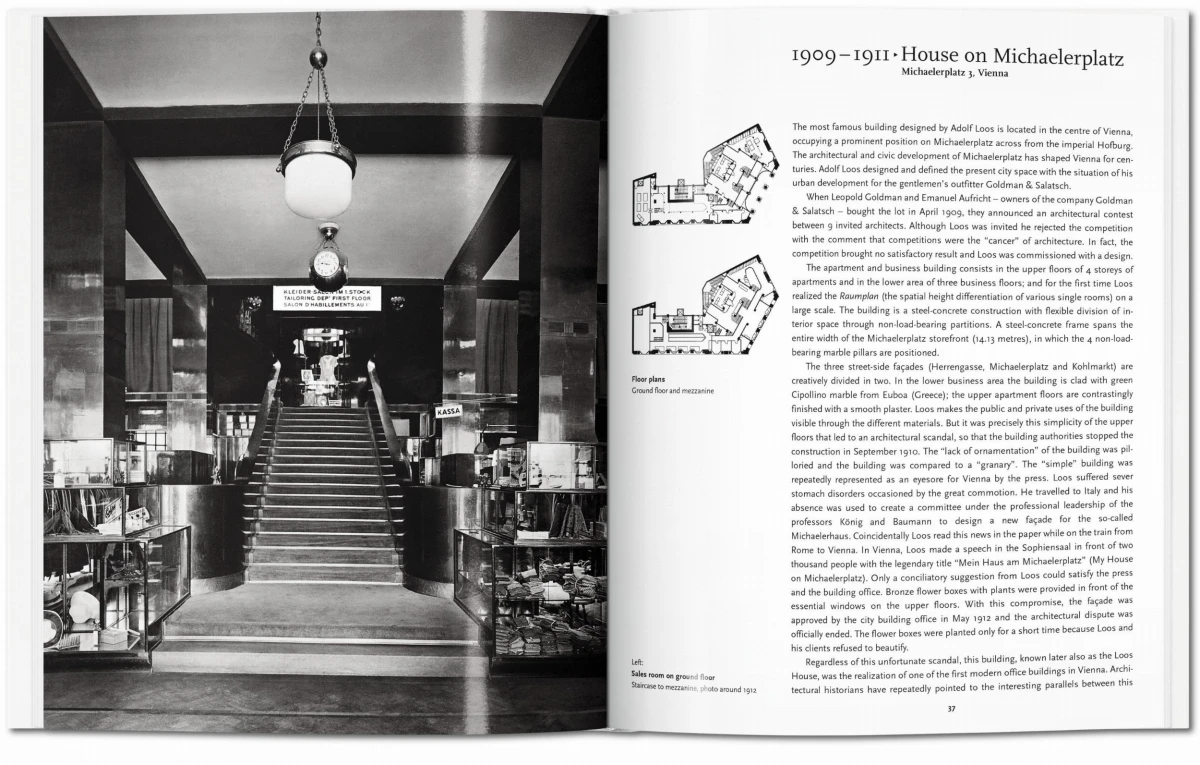Adolf Loos
20Enter your email address here and we will notify you when copies become available:

Adolf Loos
20Smooth Surfaces
Adolf Loos, prophet of 20th-century architectural modernism
Instead, in lectures and essays, such as the milestone Ornament and Crime of 1908, Loos articulated his “passion for smooth and precious surfaces.” He advocated that architectural ornamentation was, by its nature, ephemeral—locked into current trends and styles, and therefore quickly dated. Loos, himself a Classicist at heart, argued instead for simple, timeless designs with time-honored aesthetic and structural qualities.
In this essential introduction, we explore Loos’s writings, projects, and legacy, from his key concept of “spatial plan” architecture to his rejection of decorative fripperies in favor of opulent, fine-quality materials and crisp lines. Featured projects include Vienna’s Café Museum (1899), the fashion store Knize (1913), and the controversial Loos House (1912), which Emperor Franz Joseph I would refuse to travel past, bristling with rage at its insolently minimalist aesthetic.
The author
August Sarnitz is a practicing architect and professor of history and theory of architecture at the Akademie der bildenden Künste in Vienna. His many publications include books on R. M. Schindler, Lois Welzenbacher, Ernst Lichtblau, Adolf Loos, and E. A. Plischke.
The editor
Peter Gössel runs an agency for museum and exhibition design. He has published TASCHEN monographs on Julius Shulman, R. M. Schindler, John Lautner, and Richard Neutra, as well as several titles in the Basic Architecture series.
Adolf Loos
Hardcover, 21 x 26 cm, 0.63 kg, 96 pagesISBN 978-3-8365-4467-2
Edition: EnglishBorn back in 1985, the Basic Art Series has evolved into the best-selling art book collection ever published. Each book in TASCHEN’s Basic Architecture series features:
• an introduction to the life and work of the architect
• the major works in chronological order
• information about the clients, architectural preconditions as well as construction problems and resolutions
• a list of all the selected works and a map indicating the locations of the best and most famous buildings
• approximately 120 illustrations (photographs, sketches, drafts, and plans)
No reviews have been posted for this item yet. Be the first to rate this product.







